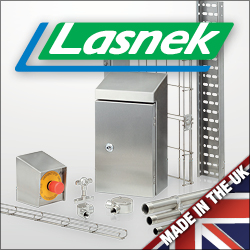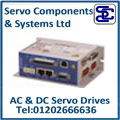
Posted to News on 26th Oct 2020, 08:57
Pumping technologies for precise fluid handling
Gerard Bush of INMOCO explains the technology involved with precision fluid pumping
Patient fluid processing, including dialysis, drug infusion, plasma and platelet extraction, has driven the development of precise liquid pumping. Amongst these applications, a piston or syringe pump is one of the most commonly used. The liquid is dispensed by moving a sealed plunger through a tube and these pumps are capable of very high precision. Using a lead screw, the higher the motor's positioning resolution, the higher the dispensing precision.
With a piston pump, liquid can either be ejected or drawn in. A single-piston pump has a fixed total displacement, which means that the total volume of liquid transfer is limited to the volume of the syringe. To achieve continuous flow, two or more pistons have to be controlled to ensure that as one dispenses, the other draws in fluid. Check valves coordinated with the pistons are used in combination to manage flow direction to create accurate, effective continuous dispensing.
The accuracy of piston pumps is dependent on position control. This means that stepper or servo motors are used with a position encoder and in the case of servo, a PID (proportional, integral, derivative) loop. To move the position of the piston from point to point, a profile generator is required and trapezoidal rather than s-curve motion profiles are generally sufficient.
An alternative to the piston pump is the diaphragm pump. Instead of a piston, a seal is used to dispense the liquid. The difference is that the seal is driven in a reciprocating manner, alternately drawing fluid in and dispensing fluid out. Again, check valves can be used to maintain fluid flow in a single direction. This reciprocating motion can be easily generated by a spinning motor.
The challenge of diaphragm pump motion control is that constant rotary velocity doesn’t deliver a constant volume of liquid. This is because the drive-motor linkage at the bottom and top of the motor arm stroke the rate of fluid delivery will be essentially zero, and at the mid-point the flow will be greatest. A cam profile can be used to remedy the issue, translating input from a master encoder; alternatively, the input can be time-based.
Another variety is the peristaltic pump, which uses a roller to squeeze a liquid-containing tube, dispensing the liquid in the direction of the roller movement. The most notable advantage is the separation of the pumping mechanism from the medium. This is crucial for applications where liquid has to be pumped without contacting the contents of the packaging, such as dialysis and blood transfusion machines. The constraint however is a lack of accuracy. The flexible tubes mean that the volume of delivered liquid for a programmed amount of motor rotation may vary and liquid can be pulsed, rather than a continual smooth flow.
Motion is created by a direct drive or geared servomotor and a profile generator and PID controller control the rotor angle. A challenge is torque variation caused by position of the roller, which can exacerbate the pulse effect. Where patient-specific variables exist, such as the effect of blood pressure, it’s also imperative to use a motion control system to handle the impact on flow output velocity.
As with peristaltic pumps, seal-less centrifugal pumps are also hermetically isolated. With an inlet, magnetic coupling, impeller, and outlet, as liquid enters, the centrifugal force of the rapidly rotating impeller forces the exit of the liquid via the outlet. Magnets inside the impeller couple to rotating magnetic fields driven by a motor shaft external to the impeller assembly.
This design also means durability because of the lack of wear on components such as the tube found on the peristaltic pump but centrifugal pumps are though relatively inaccurate and are mainly used where variables can be measured with a separate device.
For precision fluid handling, it is also possible to use general purpose air pumps with sensors. Sensors measure the actual air pressure imparted by the pump, and to determine the amount of liquid transferred, the air pressure is monitored at regular intervals. A lookup table converting pressure differential to flow rate is used to calculate the volume of transferred liquid. An outer control loop is also often combined to precisely maintain a desired pressure profile.
The advantage of this arrangement is a compact footprint at a relatively low cost. In addition to controlling pressure, outer loops are also commonly used to control temperature, liquid level and reaction rates. As a result, a variety of off-the-shelf IC and module products can integrate a complete outer loop control function.
It’s important to note that all of these pump types can also be used in non-precision applications and the crucial factor to ensure accuracy is also the type of motion control and sensors used.
Intelligent Motion Control (Inmoco)
4 Brunel Close
Drayton Fields
NN11 8RB
UNITED KINGDOM
+44 (0)1327 307600


















